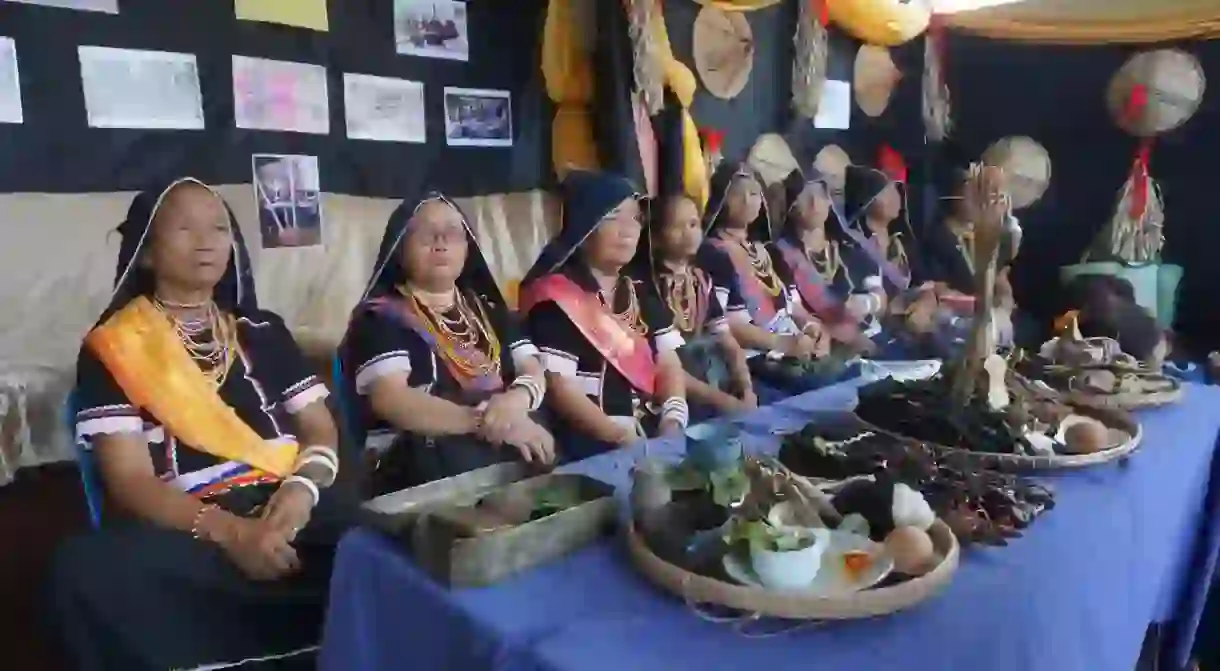A Guide to Sabah's Ancient Paganism and Animism

Before the arrival of mainstream religion in Borneo, tribes held animist beliefs with customs and traditions passed down between generations. Sadly these are becoming lost to time as more people move to the city and adopt the 21st century lifestyle.
Kadazan-Dusun pagan spirits
Sabah’s animist Kadazan-Dusun practised animism and believed all objects have a spirit or soul. Unlike other cultures, the spirits in Sabah live in our world and go about their daily business in the same way as the locals. Some were good-natured; others had evil tendencies. The Mogigion, or ‘Guardians of the Land’, were the most important who took care of nature. While they’re generally good-natured, the spirits become angry when people disrespect the land. Even today, some construction workers make shrines and give offerings to the Mogigion spirits before starting their work.

The Sacred Mount Kinabalu
Mount Kinabalu plays a central role in Sabah’s pagan past. Apart from its role as a state symbol and a major landmark in Borneo and Malaysia, local tribes hold deep spiritual connections to the giant granite rock. Spirits, it was said, leave the body after death and rest on Mount Kinabalu until they enter Libabou, the Kadazan-Dusun afterlife. Villagers buried bodies facing Kinabalu to make sure they arrived quickly at their resting spot. The Bobohizan, a type of local Shaman, performed rituals and sacrificed chickens to appease the mountain spirits and await their arrival.

The Bobohizan: the ritual priestess
The Bobohizan, or ritual priestess, communicates with spirits living in the human world. On special occasions, the priestess goes into a trance after reciting long chants. Ritual sacrifices of chickens appeased the spirits who then passed information onto the Bobohizan. The locals would then listen to the information and take everything, whether positive or negative, as a sign. People gave small tokens of appreciation to the Shaman-like priestess who also acted as doctor and judge. The once-ubiquitous Bobohizan throughout Sabah and Sarawak now performs ceremonial roles becoming fewer in numbers as the years pass. Oral chants and special knowledge intrinsic to Kadazan-Dusun culture passed from grandmother to mother to daughter is slowly being forgotten.

Pagan superstitions that still exist today
Sabah’s animists were superstitious. Some of today’s elders still follow their ancient superstitions from centuries ago. A commonly held belief in rural Sabah describes what one should do if a snake passes in front of them. Most will return home and rest to avoid the looming bad luck regardless of how far they’ve travelled. Another tells of how whistling at night might call unwanted spirits into their house. And even today it’s not uncommon for picnicking locals to offer some of their food to the spirits of the land.
Ancient headhunting traditions
Headhunting was widespread in Borneo. Kadazan-Dusun approached the practise more spiritually than their Iban and Murut neighbours. Hunters captured the head of invading warriors rather than preying on the innocent. But because both the body and head spirits immediately depart to Mount Kinabalu, they needed to remove the head while the victim was still alive. After their return, Sabah’s high priestess would perform rituals and ceremonies to appease its spirit which in turn protected the village from disasters. As of the 21st century, visitors can see heads at the Monsopiad Cultural Village near Kota Kinabalu and Sabah State Museum. Some rural communities still take care of heads collected by their ancestors.


The Harvest Festival: Kaamatan
Rice cultivation was critical to the survival and welfare of the village. A special ceremony or ritual marked each stage of the four to five-month process from planting to harvest, which culminated in a month-long celebration in May. Kaamatan, or ‘harvest’ in the local Dusun dialect, is the final celebration taking place every year on May 30 and 31 in Penampang near Kota Kinabalu. Historically, Kaamatan marks a successful annual rice harvest and to give thanks to the rice spirit called Bambaazon. Today, the importance is somewhat lost since most farmers harvest multiple times each year. Traditional food, homemade rice wine, dances and the famous Unduk Ngadau, or Harvest Beauty Pageant makes the Harvest Festival.















